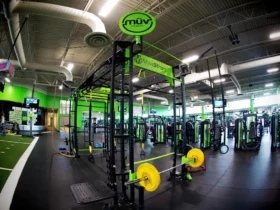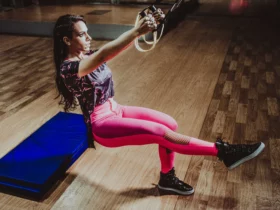Being a “foodie with a fit booty” is all about finding balance between indulgence and fitness. It’s about embracing a love for food while prioritizing health and wellness.
In this article, we will explore the concept of being a fit foodie and why finding this balance is essential for a vibrant and fulfilling lifestyle.
Understanding the Fit Foodie Lifestyle
A. Defining a “foodie”
A foodie is someone who has a deep appreciation for food, not just for its taste, but also for its cultural, social, and emotional significance. They enjoy exploring different flavors, ingredients, and culinary traditions.
B. Embracing health and wellness alongside a love for food
For a fit foodie, it’s not just about the pleasure of eating delicious meals. It’s also about nourishing the body and promoting overall well-being. They prioritize wholesome, nutrient-dense foods that support their fitness goals.
C. The rise of the “fit foodie” movement
In recent years, there has been a surge in the popularity of the fit foodie movement. People are realizing that they can have both a love for food and a commitment to fitness. This movement encourages individuals to find a harmonious relationship between indulging in savory delights and maintaining an active and healthy lifestyle.
Nourishing the Body for Optimal Fitness
A. The importance of nutrition for overall well-being
Nutrition plays a crucial role in our overall health and fitness. It provides the fuel our bodies need to function optimally and supports muscle growth and recovery. A fit foodie understands the significance of a well-rounded diet that includes all essential nutrients.
B. Balancing macronutrients: protein, carbohydrates, and healthy fats
To maintain a fit booty, it’s important to strike a balance between macronutrients. Protein aids in muscle repair and growth, carbohydrates provide energy, and healthy fats support brain function and hormonal balance. A fit foodie ensures they include all these macronutrients in their meals.
C. Incorporating whole foods and clean eating into your diet
A fit foodie’s diet is centered around whole foods that are minimally processed. They choose fresh fruits and vegetables, lean proteins, whole grains, and healthy fats. This way, they nourish their bodies with nutrient-dense foods while avoiding unnecessary additives and preservatives.
Creating a Foodie’s Fitness Routine
A. Identifying the right exercise regimen for your goals
Every fit foodie has different fitness goals. Some may focus on building strength, others on cardiovascular endurance. It’s essential to identify the exercise regimen that aligns with your goals and preferences.
B. Combining cardio, strength training, and flexibility exercises
A well-rounded fitness routine for a fit foodie includes a combination of cardiovascular exercises, strength training, and flexibility exercises. Cardiovascular exercises improve heart health, strength training builds muscle, and flexibility exercises enhance mobility.
C. Incorporating active hobbies into your lifestyle
Being a fit foodie extends beyond the gym. It’s about incorporating physical activities into your everyday life. This can include activities like yoga, hiking, dancing, or even gardening. By embracing active hobbies, you can have fun while staying fit.
Mindful Eating: The Art of Savory Indulgence
A. Cultivating mindfulness to enjoy food without guilt
Mindful eating is about being fully present and aware of the eating experience. It’s about savoring the flavors, textures, and aromas of food without feeling guilty. A fit foodie practices mindfulness to truly enjoy each bite and appreciate the nourishment it provides.
B. Savoring each bite: the power of mindful tasting
Mindful tasting involves paying attention to the sensory aspects of food. A fit foodie takes the time to truly taste and savor each bite, noticing the intricate flavors and how they interact with their palate. This helps them develop a deeper connection with their food.
C. Avoiding emotional eating and finding healthier alternatives
Emotional eating can often lead to overindulgence and unhealthy food choices. A fit foodie understands the difference between physical hunger and emotional cravings. They find healthy alternatives to comfort foods and develop strategies to cope with emotions without turning to food.
Healthy Cooking: Gourmet Delights with a Healthy Twist

A. Exploring nutritious substitutes for traditional ingredients
Cooking healthy doesn’t mean sacrificing taste. A fit foodie seeks out nutritious substitutes for traditional ingredients. For example, they might use Greek yogurt instead of sour cream or whole wheat flour instead of refined flour to create healthier versions of their favorite dishes.
B. Flavor-enhancing techniques without compromising health
A fit foodie knows how to enhance the flavors of their meals without relying on unhealthy additives. They experiment with herbs, spices, and natural flavor enhancers like citrus juices and vinegars. By mastering these techniques, they create delicious meals that are also nutritious.
C. Creative and delicious recipes for fit foodies
Fit foodies love to explore new recipes that combine nutritional value with mouthwatering flavors. They discover innovative ways to prepare food, such as swapping pasta for zucchini noodles or making cauliflower pizza crust. This creativity in the kitchen keeps their meals exciting and enjoyable.
Dining Out: Navigating Menus for the Fit Foodie
A. Tips for making healthier choices when eating at restaurants
Eating out doesn’t have to mean compromising a fit foodie lifestyle. Fit foodies have various strategies for making healthier choices at restaurants.
They opt for grilled or baked dishes instead of fried, choose lighter dressings, and ask for sauces and dressings on the side.
B. Understanding portion sizes and practicing portion control
A fit foodie understands the importance of portion control and listens to their body’s satiety cues. They may ask for a to-go box and save part of their meal for later or share an entrée with a friend to avoid overeating.
C. Asking for modifications and customizing dishes to meet your needs
Fit foodies are not afraid to ask for modifications to meet their dietary preferences. Whether it’s requesting a sauce on the side or substituting a side dish for a salad, they take charge of their dining experience to align with their health goals.
Embracing Food Diversity: Exploring Culinary Cultures
A. Diving into international cuisines and their healthy options
Culinary diversity offers fit foodies a world of healthy options. They embrace the flavors and ingredients of different cultures.
For example, they explore Japanese cuisine with its emphasis on fresh seafood and vegetables or Mediterranean cuisine with its abundance of olive oil and legumes.
B. Discovering unique ingredients and traditional cooking methods
International cuisines introduce fit foodies to unique ingredients and traditional cooking methods. They experiment with spices like turmeric and za’atar or cooking techniques like steaming and grilling.
This exploration keeps their meals exciting and introduces them to new culinary experiences.
C. Incorporating global influences into your own culinary creations
A fit foodie loves to bring global influences into their own kitchen. They incorporate international flavors and techniques into their recipes, creating unique and healthy culinary creations. This fusion of cultures adds vibrancy and variety to their diet.
The Role of Supplements in a Fit Foodie’s Diet
A. Understanding when supplements may be beneficial
Supplements can be beneficial for fit foodies when used appropriately. They can help fill in nutritional gaps or provide support for specific fitness goals.
However, it’s important to consult with a healthcare professional to determine which supplements are necessary for your individual needs.
B. Essential vitamins and minerals for overall well-being
Certain vitamins and minerals play crucial roles in a fit foodie’s overall well-being, such as vitamin D for bone health or iron for energy production. An expert can guide you in understanding which vitamins and minerals are essential for your optimal health.
C. Consulting with a healthcare professional for personalized guidance
To ensure you’re taking the right supplements and in the appropriate dosage, it’s wise to consult with a healthcare professional. They can assess your individual needs, lifestyle, and medical history to provide personalized guidance on supplement use.
Hydration: Quenching the Thirst for a Fit Lifestyle
A. The importance of staying hydrated for fitness and digestion
Staying hydrated is essential for a fit lifestyle. It helps regulate body temperature, aids in digestion, and supports overall physical performance.
Fit foodies prioritize hydration as a fundamental aspect of their well-being.
B. Choosing hydrating beverages that compliment your diet
Water is the go-to choice for hydration, but fit foodies also enjoy other hydrating beverages that suit their dietary preferences.
This can include herbal teas, infused water, or homemade fruit smoothies. They opt for beverages that provide hydration while aligning with their nutritional goals.
C. Incorporating infused water recipes as a flavorful alternative
Infused water is a popular choice among fit foodies for its refreshing taste and added health benefits.
They experiment with different combinations of fruits, herbs, and spices to create unique and flavorful infused water recipes. This not only enhances hydration but also makes it enjoyable.
Managing Social Situations: Indulging without Overindulging
A. Navigating social events while maintaining your health goals
Social events can present challenges for a fit foodie. However, they have strategies to navigate these situations while staying true to their health goals.
They plan ahead, make conscious choices, and focus on enjoying the occasion rather than just the food.
B. Strategies for handling peer pressure and temptation
Peer pressure and temptation are common obstacles at social gatherings. Fit foodies establish boundaries and communicate their choices with confidence.
They may politely decline certain foods or offer to bring a healthy dish to share, ensuring they have nourishing options available.
C. Celebrating without compromising your fit foodie lifestyle
Celebrations are part of life, and fit foodies know how to celebrate without compromising their lifestyle. They find a balance, allowing themselves to indulge in moderation while still prioritizing their health and fitness.
They savor special treats without guilt, knowing that one indulgence won’t derail their overall progress.
The Emotional Connection: Food, Happiness, and Self-Care
A. Exploring the link between food and emotional well-being
Food often has an emotional connection, and fit foodies recognize and explore this relationship. They understand that food can bring comfort and joy, but that true happiness and self-care go beyond the plate.
They find ways to nurture their emotional well-being that don’t solely rely on food.
B. Finding balance between self-care and healthy food choices
Self-care is an integral part of a fit foodie’s lifestyle. They prioritize activities that promote mental and emotional well-being, such as meditation, journaling, or spending quality time with loved ones.
They understand that taking care of their overall health involves more than just the food they eat.
C. Nurturing a positive relationship with food and your body
A fit foodie nurtures a positive relationship with food and their body. They practice self-acceptance and gratitude for the nourishment their food provides.
They avoid comparing themselves to others and embrace their unique journey towards health and fitness.
Fit Foodie Trends: Staying Up-to-Date with the Latest
A. Current trends in healthy eating and fitness
Staying up-to-date with the latest trends in healthy eating and fitness is important for a fit foodie. They keep an eye on new research, emerging superfoods, and fitness innovations to continuously evolve their lifestyle and keep it fresh and exciting.
B. Exploring new ingredients and techniques in the culinary world
The culinary world is constantly evolving, and fit foodies love to explore new ingredients and cooking techniques. They are open to trying new foods, experimenting with unique flavors, and adapting their recipes to incorporate the latest culinary trends.
C. Incorporating innovative workout routines into your fitness regimen
Innovation is not just for the kitchen; it extends to fitness routines as well. Fit foodies embrace new workout routines and fitness trends to keep their exercise regimen dynamic and engaging.
From high-intensity interval training to dance-inspired workouts, they enjoy the variety and challenge these innovations bring.
Listen to Your Body: The Art of Intuitive Eating
A. Understanding the difference between physical hunger and cravings
Intuitive eating is about reconnecting with your body’s natural hunger and satiety cues. A fit foodie understands the difference between physical hunger and emotional cravings.
They learn to listen to their body’s signals and give it the nourishment it truly needs.
B. Practicing mindful portion control and tuning into satiety cues
Mindful portion control is a key practice for a fit foodie. They pay attention to their body’s satiety cues and eat until they feel satisfied, rather than overly full.
This helps them maintain a healthy weight and avoid mindless overeating.
C. Developing a positive body image through intuitive eating
Intuitive eating allows fit foodies to develop a positive body image. It eliminates the obsession with diets and restriction, focusing instead on nourishing the body and its unique needs.
By embracing intuitive eating, fit foodies learn to appreciate and respect their bodies at any shape or size.
Summary: Being a Fit Foodie – A Lifestyle Blend
In summary, being a fit foodie is all about finding balance between indulging in flavorful food and maintaining a healthy and active lifestyle. It’s about appreciating the flavors and cultural significance of food while nourishing the body with wholesome ingredients.
By embracing this lifestyle blend, fit foodies enjoy both the pleasure of delicious meals and the benefits of a fabulous booty.
FAQs
Here are some common questions people have about being a fit foodie:
Can you still enjoy your favorite indulgent foods as a fit foodie?
Absolutely! Being a fit foodie doesn’t mean giving up all your favorite indulgences. It’s about enjoying them in moderation and finding healthier alternatives when possible.
Is it possible to follow a fit foodie lifestyle on a budget?
Yes, it is possible to follow a fit foodie lifestyle on a budget. It involves planning meals, buying in-season produce, and utilizing cost-effective protein sources like beans and lentils.
How can a fit foodie handle cravings for unhealthy foods?
A fit foodie acknowledges cravings but finds healthier alternatives to satisfy them. This could mean opting for a homemade dessert made with wholesome ingredients or enjoying a small portion of a favorite treat.
Is it necessary to count calories or track macros to be a fit foodie?
Counting calories or tracking macros is not necessary to be a fit foodie. It’s more about listening to your body, practicing portion control, and making conscious choices that support your health and fitness goals.
What are some common misconceptions about being a fit foodie?
A common misconception is that being a fit foodie requires strict dieting or deprivation. In reality, it’s about finding balance and nourishing your body with wholesome foods while enjoying the pleasures of delicious meals.











Your point of view caught my eye and was very interesting. Thanks. I have a question for you.